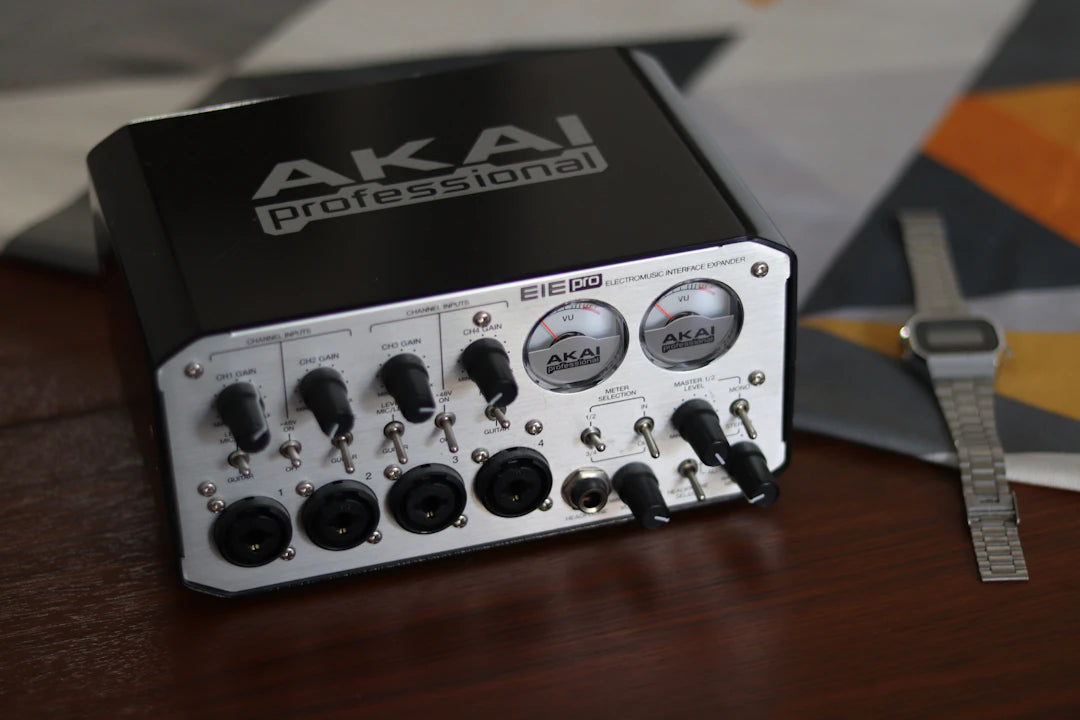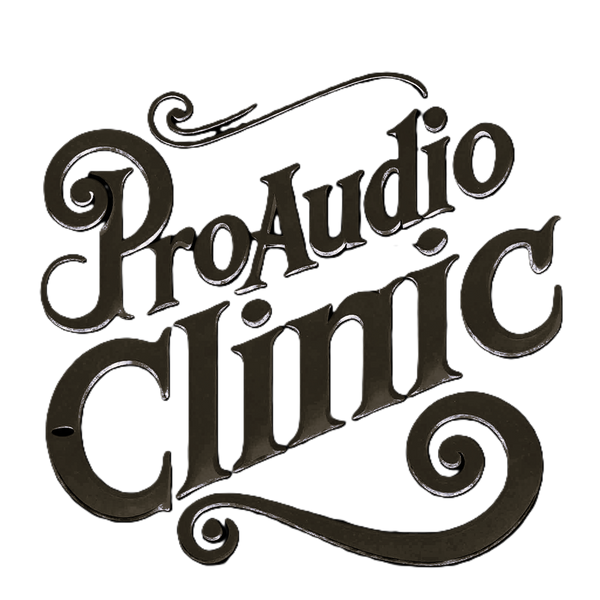
Unlocking Sound: Best Software for Audio Interfaces
Share
Frequently Asked Questions
1. What is an audio interface?
2. What types of software should I consider for audio production?
3. What are some examples of user-friendly DAWs?
4. How can plugins enhance my audio production?
5. What is the importance of mastering software?
When you set out to create music, podcasting, or any audio production, one element will undoubtedly set the foundation for your work: the best audio interfaces. These essential devices bridge the gap between sound and digital mediums, translating analog signals into digital formats and vice versa. However, having a top-notch audio interface is just the beginning. Choosing the right software can dramatically enhance your audio production capabilities. In this article, we explore the best software that complements audio interfaces, maximizing your creativity and output.
Understanding Audio Interfaces
Before diving into the best software available, let's briefly outline what an audio interface is and how it functions. An audio interface serves as an external sound card that converts the analog signals produced by instruments or vocals into digital data that can be recorded and manipulated on your computer. Likewise, it converts digital signals back into analog for playback through your speakers or headphones.
The choice of the best audio interfaces often depends on the specific needs of a user, whether it's recording instruments, vocals, or both. With the right software, you can unlock the full potential of your audio interface, enhancing not only the quality of your recordings but also the ease of your mixing and editing processes. Below, we discuss software categories that work seamlessly with audio interfaces.
Digital Audio Workstations (DAWs)
The backbone of any audio production lies in a Digital Audio Workstation (DAW). This software allows users to record, edit, and produce audio files. While there are numerous DAWs available on the market, choosing one that aligns with your working style and accommodates the best audio interfaces is essential. Here are some popular DAWs worth considering:
1. User-Friendly Interfaces
If you are new to audio production, look for a DAW that features a user-friendly interface. Software like GarageBand (for macOS) is an excellent entry point, offering a simple layout and pre-built loops that make it easy to start creating.
2. Professional Grade Options
For more experienced users, professional-grade options such as Ableton Live and Pro Tools provide advanced features and flexibility. Ableton Live is particularly favored for its real-time performance capabilities, ideal for live music production, while Pro Tools is often regarded as the industry standard in music production and audio post-production.
Audio Plugins and Effects
Once you have chosen your DAW, adding audio plugins can elevate your audio production significantly. These plugins provide various effects and processing capabilities that enhance your recorded sounds. Below, we highlight different types of plugins essential for any production setup:
1. Equalizers (EQ)
EQ plugins allow you to adjust the balance of frequencies in your audio recordings. Whether you want to boost the crispness of your vocals or cut the muddy low ends from a guitar track, EQ plugins offer the precision needed to customize every aspect of your sound.
2. Compressors
Dynamic range control is crucial in audio production, and compressor plugins help manage loud and soft sounds to maintain balance. By compressing peaks and raising quieter sections, you can achieve a much clearer audio output that stands out.
3. Reverb and Delay
To add depth and space to your recordings, reverb and delay plugins can be game-changing. These plugins help create a sense of atmosphere, turning a flat recording into a rich auditory experience. Experimenting with various settings allows you to find the perfect ambiance for your tracks.
Virtual Instruments
In addition to audio effects, virtual instruments can add an entirely new dimension to your audio interface setup. Whether you are looking for realistic orchestral sounds or synthesizers, virtual instruments can expand your creative palette.
1. Software Synthesizers
Software synthesizers create a wide range of sounds electronically, and they are essential for music genres that rely on synthetic timbres. Some popular options include Serum and Massive. These synths come equipped with a plethora of presets and customizable options, enabling users to craft unique sounds that resonate with their artistic vision.
2. Sample Libraries
Sample libraries comprise high-quality audio recordings, allowing you to incorporate real instruments or sounds into your music productions without needing physical instruments. Options like Splice and Kontakt provide an enormous catalog of sounds, including drums, pianos, and sound effects.
Audio Editing Software
Editing is an indispensable part of the audio production process. Beyond the features offered by DAWs, dedicated audio editing software can provide more specialized capabilities for tasks like audio restoration or advanced clip manipulation. Popular audio editing software includes:
1. Adobe Audition
A robust audio editing tool, Adobe Audition excels when it comes to audio restoration and editing. Its multitrack editing capability makes it an excellent choice for podcast editing, allowing users to manage multiple audio sources efficiently.
2. Audacity
For those seeking a free option, Audacity is an open-source audio editor that packs a surprising amount of features for its price. It allows users to record live audio, edit sound files, and add various effects. While it may not boast advanced features compared to paid options, it remains a popular choice for beginners and budget-conscious producers.
Collaboration and Remote Recording Software
Today’s music production landscape often requires collaboration across distances, making remote recording software a crucial tool in any audio interface setup. The ability to easily share projects, collaborate in real-time, and even record with musicians who are miles away opens a world of possibilities.
1. Source-Connect
Source-Connect is a high-quality software that facilitates remote audio recording over the Internet. It provides a latency-free connection, making it feel like you're recording in the same room as your collaborators. This is especially useful for professional musicians and sound designers.
2. Zoom and Skype
For simpler needs, platforms like Zoom and Skype have become prevalent in remote collaboration. While designed primarily for video calls, they offer features that allow musicians to share audio and collaborate effectively. With little setup, you can connect with artists, producers, and engineers worldwide.
Mastering Software
Once you've produced and mixed your audio, the final touch lies in mastering. Mastering software helps ensure that your audio records are polished, ready for distribution, and optimized for performance across various playback systems. Notable mastering tools include:
1. iZotope Ozone
A powerhouse in the mastering domain, iZotope Ozone provides a suite of tools, including EQ, compression, and stereo imaging. Its intuitive interface is beginner-friendly, yet it offers enough depth for seasoned pros to refine their work deeply.
2. LANDR
For quick and accessible mastering solutions, LANDR utilizes AI technology to analyze your tracks and provide instant mastering services. It’s a convenient option for artists who need a polished sound without diving deep into the complexities of traditional mastering software.
Integrating Your Software and Audio Interfaces
Having the best audio interfaces and software is one thing, but integrating them smoothly into your workflow is another. To maximize efficiency:
- Check Compatibility: Ensure your chosen software is compatible with your audio interface, particularly in driver installation and audio routing.
- Utilize Templates: Most DAWs allow you to create templates for common setups, saving you time when starting new projects.
- Keep Your System Updated: Regular software updates can improve performance and compatibility, especially when using various plugins alongside your audio interfaces.
Explore Your Creative Potential
The journey into audio production can be immensely rewarding. With the best audio interfaces coupled with the right software, you unlock endless possibilities for creativity and expression. Whether you’re recording soulful melodies, crafting podcasts, or designing soundscapes, the potential for creativity is boundless.
Remember, the world of audio production is a continual learning experience. Stay current on new software updates, explore online communities, and keep experimenting with different workflows to find what resonates with you.
Final Thoughts on Your Audio Journey
As you embark on your audio journey, don't forget that the tools you select can significantly influence your output. By integrating the best audio interfaces with exceptional software, you’re not only enhancing your production quality but also the overall creative process. Keep exploring, keep learning, and most importantly, keep creating—your audio adventure is just beginning!
Explore the world of another Shopify or Wix store owner. Visit their captivating online store. Keep in mind that this is a promotional link, and we are not responsible for the content of the linked store.
